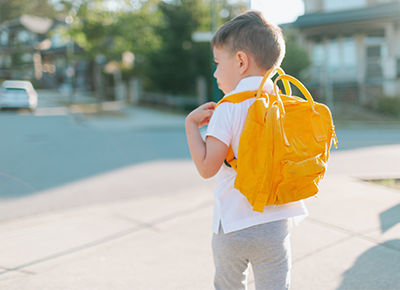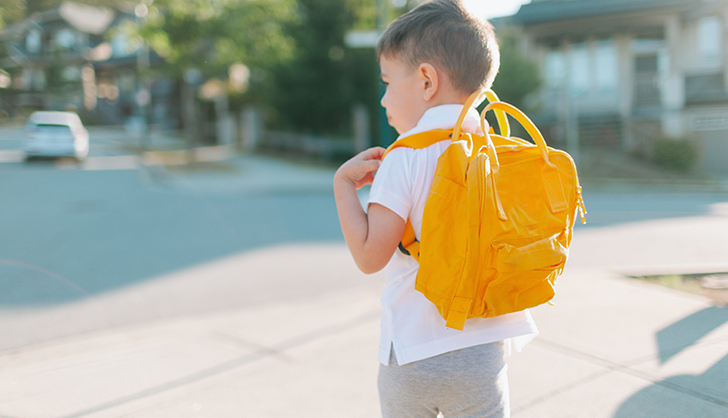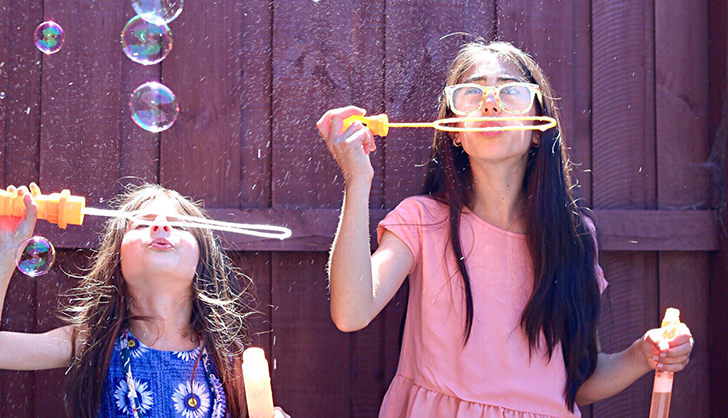6 Genius Strategies for Calming Anxious Kids

If you are an adult who suffers from anxiety, you likely have a few tricks you rely on to calm yourself down. But those exercises may be utterly useless if your kid is the one gripped by fear. Whether you’re on the soccer field, discussing a new summer camp or approaching a sleepover, your child may be too overwhelmed—or simply too young—to take in your advice. Thankfully, child psychologists and other parenting experts have cracked the code when it comes to helping kids find calm—and fast. Here are their best tips.

1. Keep your cool
Step one for parents of anxious kids is to accept that your kid may be wired for more anxiety than some of his peers. According to parenting coach and social worker Dr. Erin Leyba, up to 20 percent of kids are born with a more anxious temperament, which means his fight-or-flight response is more easily and frequently triggered by stress or new situations. “Brain research suggests that it's extremely difficult (if not impossible) for kids to think with logic or control their behavior until they step out of fight/flight/freeze mode,” Leyba writes in Psychology Today. It can even take up to an hour for a child’s nervous system to return to a calm state. Translation? Attempting to distract, punish or bribe your kids out of an anxiety spiral will be futile. So what can you control? The way you react to his anxiety, modeling how to keep your wits about you—even when you are at your wit’s end.
RELATED: Are You Parenting a Dandelion, a Tulip or an Orchid? Tips to Help Each Type of Child Thrive
2. Offer them gum
Though we can feel our dentist cringing, we were delighted to learn that chewing gum stimulates the vagus nerve (it’s near the voice box) and that this can interrupt a fight-or-flight response. Singing, eating a piece of dark chocolate or gargling with water may have a similar effect. But gum may be your best and most inconspicuous bet when out in public.

3. Validate their feelings
“Validation is a powerful tool for helping kids calm down by communicating that you understand and accept what they’re feeling,” writes Caroline Miller, editorial director of the Child Mind Institute. Instead of trying to deny, fix or change their feelings, make it clear that you just…get it. You might say, “I can see that you are really nervous about walking into this sleepover. I’m going to sit here with you so you can tell me how you are feeling, then we can decide together what to do next.” Miller says that “feeling understood…helps kids let go of powerful feelings. Helping kids by showing them that you’re listening and trying to understand their experience can help avoid explosive behavior when a child is building towards a tantrum.” Adds Dr. Clark Goldstein, a specialist in childhood mood disorders and anxiety: “You can’t promise a child that his fears are unrealistic—that he won’t fail a test, that he’ll have fun ice skating or that another child won’t laugh at him during show and tell. But you can express confidence that he’s going to be OK, he will be able to manage it and that, as he faces his fears, the anxiety level will drop over time. This gives him confidence that your expectations are realistic, and that you’re not going to ask him to do something he can’t handle.”

4. Blow
When kids are anxious, the goal is to get them to take deeper breaths, which physiologically calms them. Leyba suggests having a whistling contest or pretending your (or their) fingers are birthday candles and then having your child blow them out. You might also carry a pinwheel in your bag and have little ones blow it for a few minutes. Blowing bubbles is an equally great (if potentially messier) on-the-go option.

5. Catch them being good
When it comes to managing children’s behavior, positive reinforcement is always ideal. But it can be hard to find the upside when your kids are melting down or freaking out. It turns out even the tiniest bits of progress are worth praising. “When helping your child deal with an emotion, notice the efforts to calm down, however small,” writes Miller. “For example, if your child is in the midst of a tantrum and you see him take a deep inhale of air, you can say, ‘I like that you took a deep breath’ and join him in taking additional deep breaths.”
6. Get physical
“Heavy work”—like doing wall pushups, climbing a jungle gym, carrying a loaded backpack, pushing a vacuum or pulling a wagon—can help kids focus and regulate their emotions, writes Leyba. Ditto physical exercises that “cross the midline” of the body: wiping a table with one hand, walking in a figure eight, doing windmills with their arms. These moves “can help reset the brain” and enable kids to think more clearly and logically. Doing it with them could even provide some comic relief.

